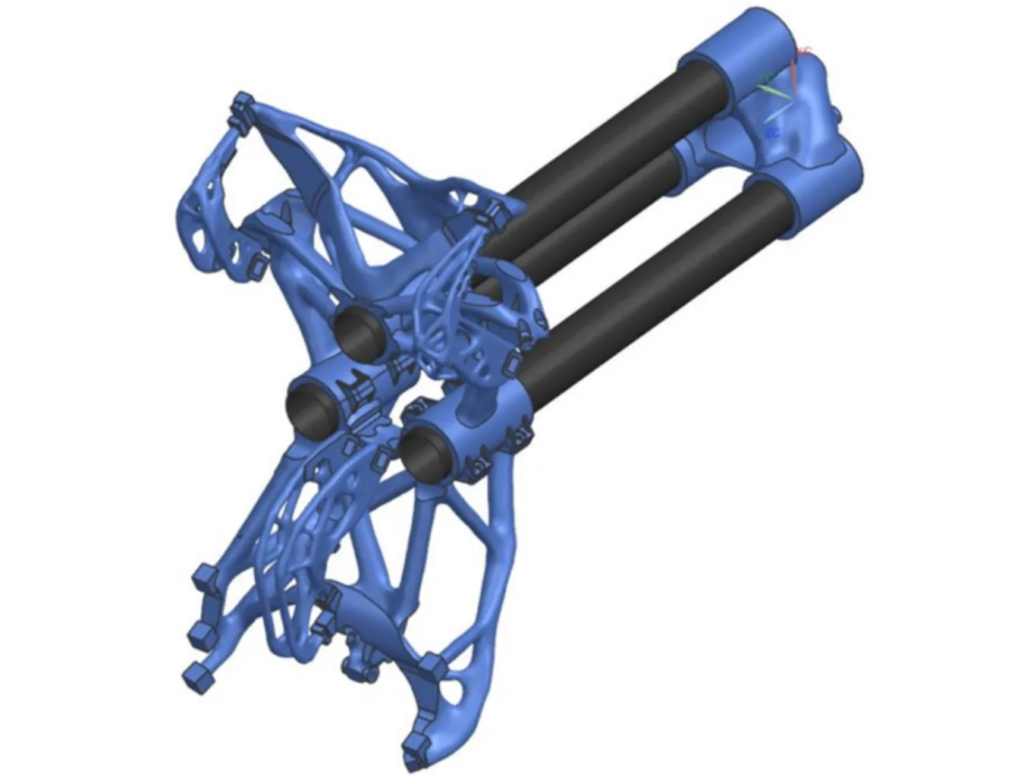ASIA ELECTRONICS INDUSTRYYOUR WINDOW TO SMART MANUFACTURING
Siemens Shows Greener Additive Manufacturing
Siemens has recently demonstrated what sustainable additive manufacturing looks like. Particularly, using several use cases, the company showed how resources, carbon footprint and environmental impact can be reduced.
For this purpose, the entire value chain of a product must be considered transparently. Then climate targets can be achieved, and an environmentally friendly industry can be designed.
Sustainable Design of Additive Gripper Solutions
In the first use case, Siemens proves that optimized product design plays an important role in green additive manufacturing. With the gripper solution of a handling robot used in automotive production, the total mass of the gripper could be reduced by 64 percent. By utilizing the design freedom in additive manufacturing in the design phase, weight and thus required material can be significantly reduced. With “NX for AM”, Siemens offers a seamless digital process chain to find the best design through topology optimization, then test it using FEM simulation and prepare it for printing. In addition, “Teamcenter Product Cost Management” and “Product Carbon Footprint Calculator” allow for optimizing both production costs and carbon footprint of the product in advance. The specific project originally involved a gripper solution weighing over 58 kg, which was assembled from more than 660 parts. In addition to weight reduction, design freedom has also reduced 80 percent of assembly time by eliminating the need for complex assemblies. Comparing conventional and additive design, production costs were reduced by 73 percent; with an 82 percent lower carbon footprint. In addition, the weight reduction in turn enabled the use of smaller robots, resulting in energy savings of 54 percent per year.

More Efficient Production
A second use case for environmentally friendly additive manufacturing is the cooperation with GENERA, a leading global supplier of highly automated, photopolymer-based additive manufacturing technologies, in conjunction with the “AM Digital Factory Planning toolbox” from Siemens Advanta. Here, the large-scale production of plug connections was simulated by use of digital light processing.
Through the “Digital Twin of Production“, precise and transparent analyses of the energy consumption of the 3D printers under different machine states could be created without interfering with running systems. Due to more efficient energy management, it was possible to save between 25 and 30 percent of the energy requirement per component produced, depending on the utilization of the printers.
Environmentally Friendly 3D Printing Materials
In the third application, Siemens is demonstrating that in 3D printing for buildings and infrastructure environmentally friendly materials – ideally even completely biodegradable – offer enormous potential for a sustainable industry. AM machine builder CEAD and Poly Products, a Dutch composite materials expert, have developed 3D-printed flax harbour fenders as part of the EU’s SeaBioComp project. Harbour fenders are buffers that ensure that the quay walls do not damage the outer walls of the ships lying in port. Harbour fenders are usually made of plastic. This in turn enters the sea through abrasion as environmentally harmful microplastics.
The flax fenders are just as resistant as conventional harbour fenders; but have a smaller carbon footprint. The flax is 100 percent biodegradable.
To produce fenders from flax, Poly Products relies on a 3D printer with a control system from Siemens. The Sinumerik 840D sl is installed in CEAD’s CFAM Prime 3-axis portal machine. This allows the required precision to be achieved in the complex robot movement to enable both the correct material application and the milling of the component to a final contour.
AM Network Reduces Carbon Footprint
Additive manufacturing marks the way for manufacturing decentralization. It changes the existing paradigm of expensive physical inventory to a digital warehouse, where the goods are produced only when needed, nearby the point of consumption. It increases the supply chain resiliency, decreases inventory costs, and decreases the transportation CO2 emissions. Siemens Additive manufacturing digital solutions allow organizations to build, verify and certify these digital assets into pre-defined libraries, ready to be ordered by click of a button. The Siemens AM Network routes these manufacturing requests to the most appropriate production sites to maximize the global production capacity and assure higher utilization of the equipment.
Unnecessary downtimes are avoided, energy spent in warming up and cool-down of the 3D printer is optimally used. The Siemens AM Network also allows companies to digitally interact with each other and optimize the use of underutilized production facilities with fluctuating production needs.




